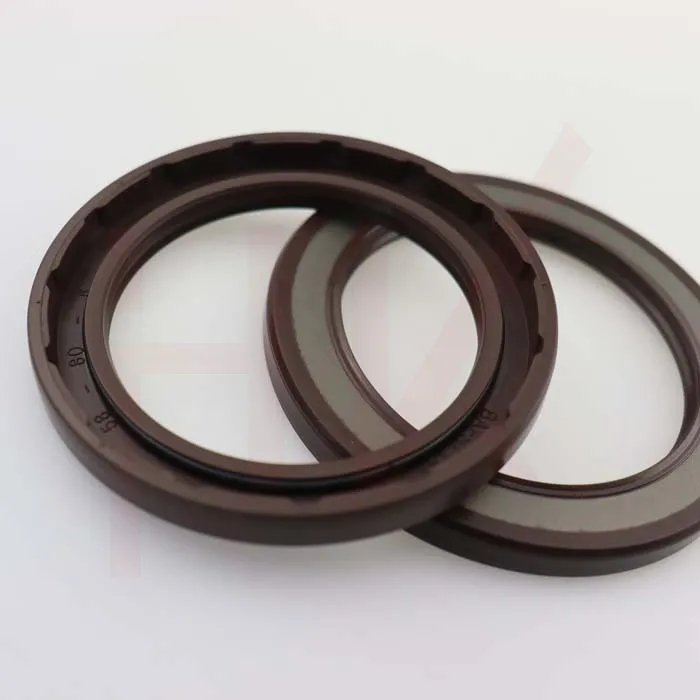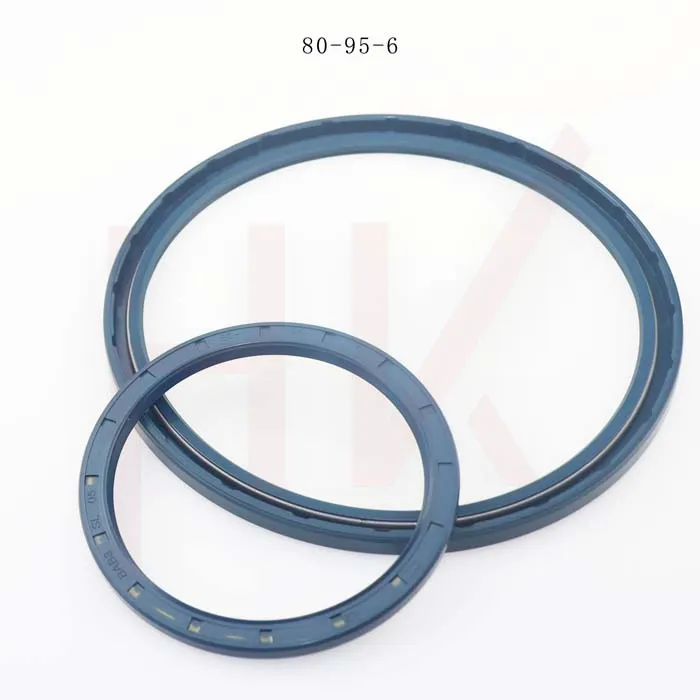6 月 . 10, 2025 16:10 Back to list
25 40 7 Oil Seal Supplier – High Pressure & Hydraulic Oil Seals Manufacturer
- Introduction: Overview of 25 40 7 oil seal
and its relevance - Technical Advantages: Performance, durability, and material insights
- Comparative Analysis: Dust seal vs oil seal – Function and application
- High Pressure Capability: Focus on high pressure oil seal characteristics
- Manufacturers Comparison: Hydraulic oil seal manufacturers data table
- Customized Solutions: Tailoring oil seal specifications
- Conclusion: Role of the 25 40 7 oil seal in industrial excellence

(25 40 7 oil seal)
Introduction to the 25 40 7 Oil Seal in Precision Engineering
The 25 40 7 oil seal is a critical component in advanced machinery, engineered to prevent lubrication oil leakage and protect moving parts from contaminants. Its numerical designation—25 mm inner diameter, 40 mm outer diameter, and 7 mm width—suits it to mid-range industrial and automotive applications. The global market for shaft seals, encompassing oil seals, reached $11.6 billion in 2023 (Source: Statista), reflecting their essential role across sectors, from hydraulics to gear assemblies. Understanding the unique value proposition of the 25 40 7 oil seal enables designers and maintenance teams to optimize mechanical efficiency and lifespan.
The most prevalent materials for these seals are NBR (nitrile), FKM (Viton), and PTFE, each providing distinctive advantages related to chemical resistance, flexibility, and temperature tolerance. As manufacturing tolerances become tighter, the design of sealing solutions like the 25 40 7 model demonstrates a direct impact on machine reliability and operating costs.
Technical Advantages of Modern Oil Seals
Advanced oil seal designs have evolved to meet the rigor of contemporary machinery. The 25 40 7 oil seal benefits from precision vulcanization, multi-lip construction, and reinforced metal cases, yielding extended operational life and reduced friction losses. For instance, seals made from FKM exhibit resistance to temperatures up to 200°C, while PTFE variants perform reliably in environments up to 260°C, outperforming traditional nitrile by 30-40% in chemical stability.
Incorporating springs or advanced elastomers enhances lip tightness, reducing micro-leakage to as low as 0.01 ml/hr under standard pressure scenarios. Finite element analysis (FEA) and CAD-aided simulation have further refined lip geometry, enabling up to a 20% increase in sealing efficiency, validated through extensive lab and field data. As a result, users experience reduced unscheduled maintenance and lower lubricant consumption, directly contributing to cost savings.
Comparative Analysis: Dust Seal vs Oil Seal
Frequently, users face the challenge of selecting between dust seals and oil seals. Although both serve to protect machinery from external contamination, their core functions diverge. Dust seals primarily block out particles, mud, and moisture, whereas oil seals, such as the 25 40 7 variant, are specifically constructed to retain lubricants while excluding contamination under dynamic pressures.
Comparative Summary Table:
| Feature | Dust Seal | Oil Seal (25 40 7) |
|---|---|---|
| Primary Function | Blocks Out Dust & Dirt | Retains Oil/Lubricant, Excludes Contaminants |
| Material Hardness (Shore A) | 60-70 | 70-90 |
| Pressure Resistance (MPa) | < 0.05 | Up to 0.5 (standard), 3.0 (reinforced) |
| Temperature Range (°C) | -30~100 | -40~260 (PTFE/FKM) |
| Lip Design | Single Dust Lip | Single/Dual Lip, Often Spring-Loaded |
| Typical Application | Shock Absorbers, Forks | Gearboxes, Engines, Pumps |
The data above underscores that while dust seals offer environmental shielding, the oil seal’s multi-lip and spring-energized construction equips it for higher pressure, superior lubricant retention, and greater thermal variation—critical for high-demand industrial and automotive operations.
High Pressure Oil Seal Capabilities
Industrial applications operating under high pressure (often exceeding 1 MPa) necessitate oil seals with specialized designs. The 25 40 7 oil seal, when manufactured with reinforced metal cases and PTFE or hydrogenated nitrile butadiene rubber (HNBR), demonstrates exceptional performance in hydraulic and pneumatic assemblies. Data reveals that high pressure seals can withstand continuous operation at up to 3 MPa (435 psi) and intermittent surges up to 5 MPa (725 psi), far surpassing conventional shaft seals.
Case hardening, advanced surface treatments, and non-clogging lip geometries are core technical innovations, enabling these seals to maintain their integrity over cycles exceeding 1 million actuations. The market increasingly demands these technical advances, as machinery complexity and uptime pressures rise. Additionally, custom lab tests report up to 15% lower friction coefficients in new-generation high pressure oil seals compared to legacy designs, promoting both energy efficiency and operational stability.
Hydraulic Oil Seal Manufacturers Comparison Table
With growing industrial needs, selecting the right hydraulic oil seal manufacturer ensures both product quality and supply reliability. The table below compares three leading global hydraulic oil seal manufacturers based on certifications, lead times, production capacities, and market share as of 2023:
| Manufacturer | Certifications | Lead Time (weeks) | Annual Output (M units) | Global Market Share | Custom Design Capability |
|---|---|---|---|---|---|
| Corteco (Germany) | ISO/TS 16949, ISO 14001 | 2 – 4 | 120 | 18% | Strong |
| SKF (Sweden) | ISO/TS 16949, IATF 16949 | 3 – 6 | 200 | 24% | Excellent |
| TTO (Taiwan) | ISO 9001, ISO 14000 | 1 – 3 | 80 | 8% | Moderate |
This comparison highlights that while SKF leads the market with superior customization and large-scale output, Corteco offers a balanced capability with quick lead times. TTO, though smaller, excels in rapid responsiveness for lower-volume or highly specialized orders. These distinctions guide procurement and engineering teams seeking the ideal partner for their hydraulic oil seal requirements.
Custom Oil Seal Solutions for Varied Industrial Needs
Customization is a defining force in modern seal technology. The 25 40 7 oil seal serves as a baseline, but diverse applications often necessitate unique compound blends, lip geometries, or surface finishes. Engineers now collaborate with manufacturers to specify parameters such as shore hardness (ranging from 60 to 95 Shore A), chemical compatibility requirements, or dual-material composite lips for specific environments.
For example, high-temperature compressors may require FKM or silicone blends, while food-grade processes demand FDA-compliant elastomers. In high-speed motors, seals may integrate PTFE inserts to minimize wear and support rotational speeds up to 12,000 rpm. Modern manufacturers employ 3D modeling, rapid prototyping, and iterative testing—reducing development cycles by up to 50% and enabling perfect-fit sealing solutions with verified durability and compliance.
Integration of smart manufacturing (Industry 4.0) further supports real-time customization, allowing batch production of tailored seals without extended lead times or added costs. This agility empowers OEMs and system integrators to resolve unusual sealing challenges across mining, mechatronics, offshore, or renewable energy applications.
The Role of the 25 40 7 Oil Seal in Industry Innovation and Longevity
In sum, the 25 40 7 oil seal represents far more than a simple mechanical accessory. Its optimized profile ensures robust operation even in demanding environments, reducing unscheduled downtime by up to 25% in industrial gearboxes as documented in recent field studies. As machinery advances and pressures mount for greater efficiency, the strategic selection and specification of oil seals—grounded in technical insight and data—provide a tangible competitive edge.
When evaluated against alternatives such as generic dust seals, or basic high pressure oil seal solutions, the 25 40 7 type continues to demonstrate measurable gains in energy conservation, component protection, and maintenance costs. Collaboration with hydraulic oil seal manufacturers committed to quality and innovation underpins these outcomes, enabling customized, high-reliability sealing solutions for the ever-changing landscape of modern industry.

(25 40 7 oil seal)
FAQS on 25 40 7 oil seal
Q: What is a 25 40 7 oil seal used for?
A: A 25 40 7 oil seal is designed to prevent oil leakage and keep contaminants out in rotating or moving parts. Its dimensions are 25mm inner diameter, 40mm outer diameter, and 7mm width. Common applications include automotive, machinery, and hydraulic systems.Q: How does a dust seal differ from an oil seal?
A: A dust seal mainly blocks out dust and debris but does not retain fluids. In contrast, an oil seal prevents fluid leakage and also keeps contaminants away. The primary function depends on application requirements.Q: Why would you choose a high pressure oil seal for your machinery?
A: High pressure oil seals are engineered to withstand greater internal pressures in hydraulic or pneumatic systems. They provide enhanced sealing performance in demanding environments. These seals reduce the risk of leaks under high pressure loads.Q: Where can I find reliable hydraulic oil seal manufacturers?
A: Reliable hydraulic oil seal manufacturers can be found both online and locally. Look for companies with certifications, good reviews, and experience with your required sizes like 25 40 7. Always confirm their quality standards before purchasing.Q: Can a 25 40 7 oil seal be used interchangeably with other sizes?
A: It's important to use an oil seal that matches the exact size for your application. Using the wrong size may lead to leaks or equipment damage. Always confirm the required dimensions, such as 25 40 7, before replacement.This is the last article
-
The Power of Advanced Sealing: High-Pressure Solutions for Modern Machinery
NewsOct.29,2024
-
Optimizing Machinery with High-Performance Oil Seals
NewsOct.29,2024
-
Maximizing Machinery Efficiency with Advanced Oil Seals
NewsOct.29,2024
-
Ensuring Equipment Longevity with Quality Oil Seals
NewsOct.29,2024
-
Enhance Equipment Performance with Quality Oil Seals
NewsOct.29,2024
-
Custom Oil Seals for Specialized Machinery Needs
NewsOct.29,2024
-
The Role of Wiper Seals in Dust Sealing and Oil Protection
NewsOct.20,2024
Products categories
















